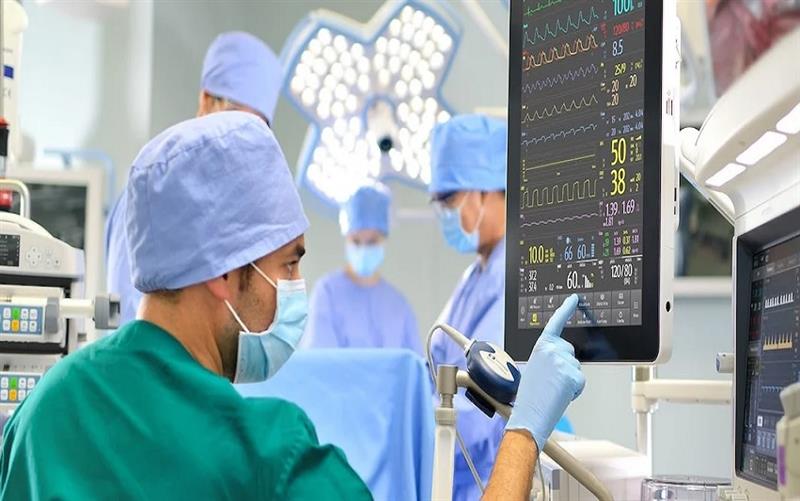
In today's rapidly evolving healthcare landscape, medical software plays a crucial role in patient care, diagnostics, and overall health management. From electronic health records (EHR) systems to diagnostic tools and telemedicine platforms, the demand for high-quality medical software is greater than ever. Ensuring excellence in medical software is not merely about robust coding; it encompasses a broad range of considerations, from regulatory compliance to user experience.
Creating high-quality medical software is a multifaceted challenge that requires careful consideration of regulatory compliance, patient safety, user experience, interoperability, data security, performance, and innovation. By prioritizing these key factors, developers can ensure that their software not only meets the stringent demands of the healthcare industry but also significantly contributes to better patient outcomes and more efficient healthcare delivery.
In the dynamic field of medical software development, excellence is not an option but a necessity. By adhering to best practices and staying abreast of technological advancements, developers can deliver solutions that truly make a difference in the world of healthcare. Here, we explore the key factors that contribute to the development of exceptional medical software.
1. Regulatory Compliance and Standards
Understanding Regulatory Requirements
Medical software must comply with stringent regulatory requirements to ensure patient safety and data security. In the United States, the Food and Drug Administration (FDA) regulates medical devices, including software as a medical device (SaMD). The European Union has its own set of regulations under the Medical Device Regulation (MDR).
Achieving Certification
Obtaining certifications such as ISO 13485 for quality management systems and IEC 62304 for software life cycle processes is essential. These certifications assure stakeholders that the software meets international standards for quality and safety.
2. Patient Safety and Risk Management
Conducting Risk Assessments
Risk management is a continuous process in medical software development. Identifying potential hazards, assessing risks, and implementing mitigation strategies are crucial steps. This process should be integrated throughout the software development life cycle (SDLC).
Ensuring Data Integrity
Patient safety depends significantly on the integrity and accuracy of data. Implement robust data validation and error-checking mechanisms to ensure that data is correctly entered, processed, and stored.
3. User-Centered Design (UCD)
Engaging End Users
User-centered design involves actively engaging healthcare professionals, patients, and other stakeholders in the design process. Their input is invaluable for creating software that is intuitive and meets real-world needs.
Usability Testing
Conduct thorough usability testing to identify and rectify issues that could hinder user experience. This includes ensuring that the software is accessible to users with varying levels of technical proficiency and those with disabilities.
4. Interoperability
Ensuring Seamless Integration
Medical software must seamlessly integrate with existing systems such as EHRs, laboratory information systems (LIS), and other health IT systems. Adopting standards like Health Level Seven (HL7) and Fast Healthcare Interoperability Resources (FHIR) facilitates this integration.
Data Exchange
Effective data exchange between systems ensures continuity of care and comprehensive patient records. Implement robust APIs and interoperability protocols to enable secure and efficient data sharing.
5. Data Security and Privacy
Implementing Strong Security Measures
Protecting patient data from breaches is paramount. Implement strong encryption, secure user authentication, and regular security audits to safeguard sensitive information.
Compliance with Privacy Laws
Adhere to privacy regulations such as the Health Insurance Portability and Accountability Act (HIPAA) in the U.S. and the General Data Protection Regulation (GDPR) in the EU. These laws set stringent requirements for protecting patient information and ensure patients' rights to privacy.
6. Performance and Reliability
Ensuring Robust Performance
Medical software must perform reliably under various conditions. This includes handling high volumes of data, supporting concurrent users, and ensuring uptime during critical operations.
Continuous Monitoring and Maintenance
Implement continuous monitoring to detect and resolve issues in real time. Regular maintenance updates and patches are necessary to keep the software running smoothly and securely.
7. Innovation and Adaptability
Embracing Emerging Technologies
Incorporate emerging technologies such as artificial intelligence (AI) and machine learning (ML) to enhance diagnostic accuracy, predictive analytics, and personalized medicine.
Scalability
Design software that can scale to accommodate growing user bases and evolving technological landscapes. Scalability ensures that the software remains relevant and useful over time.
8. Robust Testing and Validation
Comprehensive Testing Strategies
Medical software requires rigorous testing to ensure it functions correctly under all expected conditions. This includes unit testing, integration testing, system testing, and user acceptance testing (UAT). Each level of testing ensures that different aspects of the software work as intended and interact seamlessly.
Validation and Verification
Validation ensures the software meets the needs of the end-user and fulfills its intended purpose, while verification ensures it is built correctly according to specifications. Both processes are crucial in maintaining the integrity and reliability of medical software.
9. Scalability and Flexibility
Scalability for Growth
Design the software architecture to support scalability. As healthcare organizations grow, their software needs can increase exponentially. Scalable software can handle increased loads, more users, and larger data volumes without compromising performance.
Flexibility for Adaptation
Medical software must be flexible to adapt to new regulations, standards, and technologies. This adaptability ensures the software remains relevant and effective over time, accommodating changes in healthcare practices and technological advancements.
10. Effective Documentation and Training
Comprehensive Documentation
Detailed documentation is essential for medical software. This includes user manuals, technical guides, and regulatory documentation. Proper documentation supports user training, troubleshooting, and ensures compliance with regulatory standards.
Training Programs
Implementing effective training programs for users is crucial. Training should cover all aspects of the software, ensuring users can utilize its full functionality. Continuous education programs can help users stay updated with new features and best practices.